Alternative to Hybrid Supercapacitor: LTO Batteries
Author: Nichicon
10/1/2024
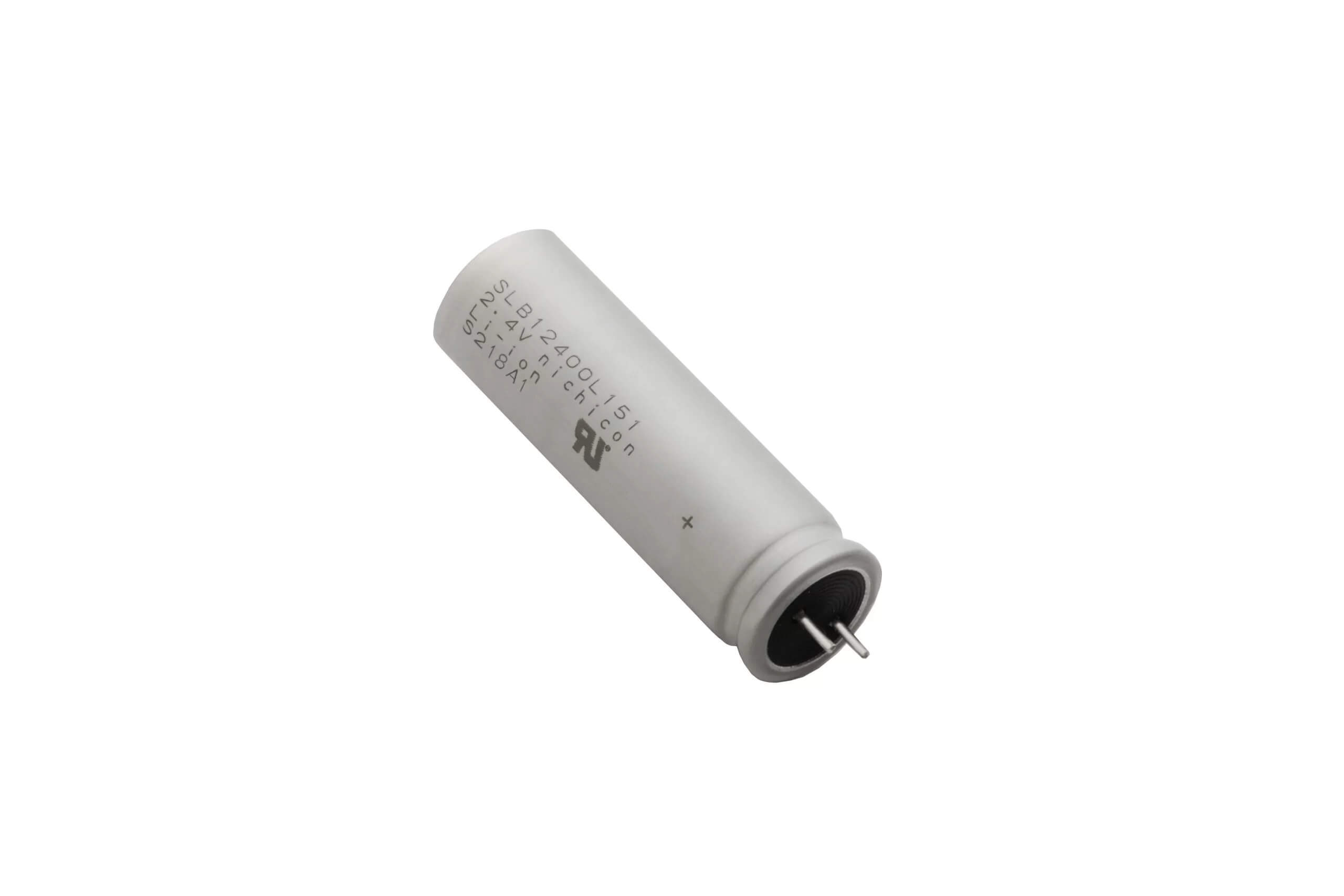.jpg)
Hybrid supercapacitors, also known as lithium-ion capacitors, offer a combination of the properties of electric double-layer capacitors (EDLCs) and lithium-ion batteries for better performance and safety. They are commonly used in applications where higher energy density, higher voltage, and lower self-discharge is required. Hybrid supercapacitors can meet these requirements and overcome common problems associated with lithium-ion batteries, such as thermal runaway and short cycle life.
Lithium titanate-oxide (LTO) batteries, like hybrid supercapacitors, also combine the best qualities of ELDCs and lithium-ion batteries but with one significant difference. LTO batteries use lithium titanate as the active anode material as opposed to carbon-based anodes found in hybrid supercapacitors. The lithium titanate reduces internal resistance which improves battery life, and increases energy density. LTO batteries have energy densities that are approximately two times that of a hybrid supercapacitor.
Nichicon produces LTO batteries that can be used as a alternative to hybrid supercapacitors in applications where high volumetric efficiency is required. Our LTO batteries combine the best features of lithium-ion batteries and supercapacitors such as higher energy density, rapid charge/ discharge, long cycle life and safety.
What is a Hybrid Supercapacitor?
A hybrid supercapacitor is like a standard supercapacitor that combines electric double layer capacitor (EDLC) construction and lithium-ion battery technology. Hybrid supercapacitors have a higher operating voltage, higher capacitance, and have a higher energy density than supercapacitors with lower self-discharge and standby current. They feature a graphite anode laced with lithium and use a different type of electrolyte.
LTO batteries have similar characteristics to hybrid supercapacitors as they also incorporate lithium-ion battery technology. LTO batteries use a lithium titanate oxide anode, and reduces electrochemical reactions causing an increase in the solid electrolyte interphase (SEI).
The following are the main characteristics of hybrid supercapacitors compared to LTO batteries:
Life Cycle
Hybrid supercapacitors have a long lifecycle like traditional supercapacitors because of their ability to charge and discharge hundreds of thousands of times. LTO batteries also have a long lifespan featuring tens of thousands of charge/ discharge lifecycles, but the lower internal resistance reduces electrolyte decomposition for improved lifecycle performance.
Operating Temperatures
Hybrid supercapacitors and LTO batteries can operate effectively over a wide temperature range. Hybrid supercapacitors have a temperature range of -25 °C to +70 °C with voltage derating, while LTO batteries operate at full rated voltage over a temperature ranging from -30 °C and up to +80 °C.
Energy Density
Hybrid supercapacitors have an energy density that is 5 times higher than the energy density of a standard supercapacitor. Our high energy density LTO batteries contain 10 times the energy of a traditional supercapacitor of similar size.
Power Density
LTO batteries and hybrid supercapacitors have fast charge/ discharge times which allows them to have high power densities. Both options can be used in applications that require high power density.
Safety and Sustainability
Our LTO batteries have undergone testing for overvoltage, over discharge, short circuit, and puncture tests for safety. They do not experience thermal runaway when a short circuit occurs. LTO batteries can operate in harsh conditions and temperatures with very low risk of ignition or explosion.
Our LTO batteries are also environmentally responsible and comply with international environmental requirements.
Are LTO Batteries an Alternative for Hybrid Supercapacitors?
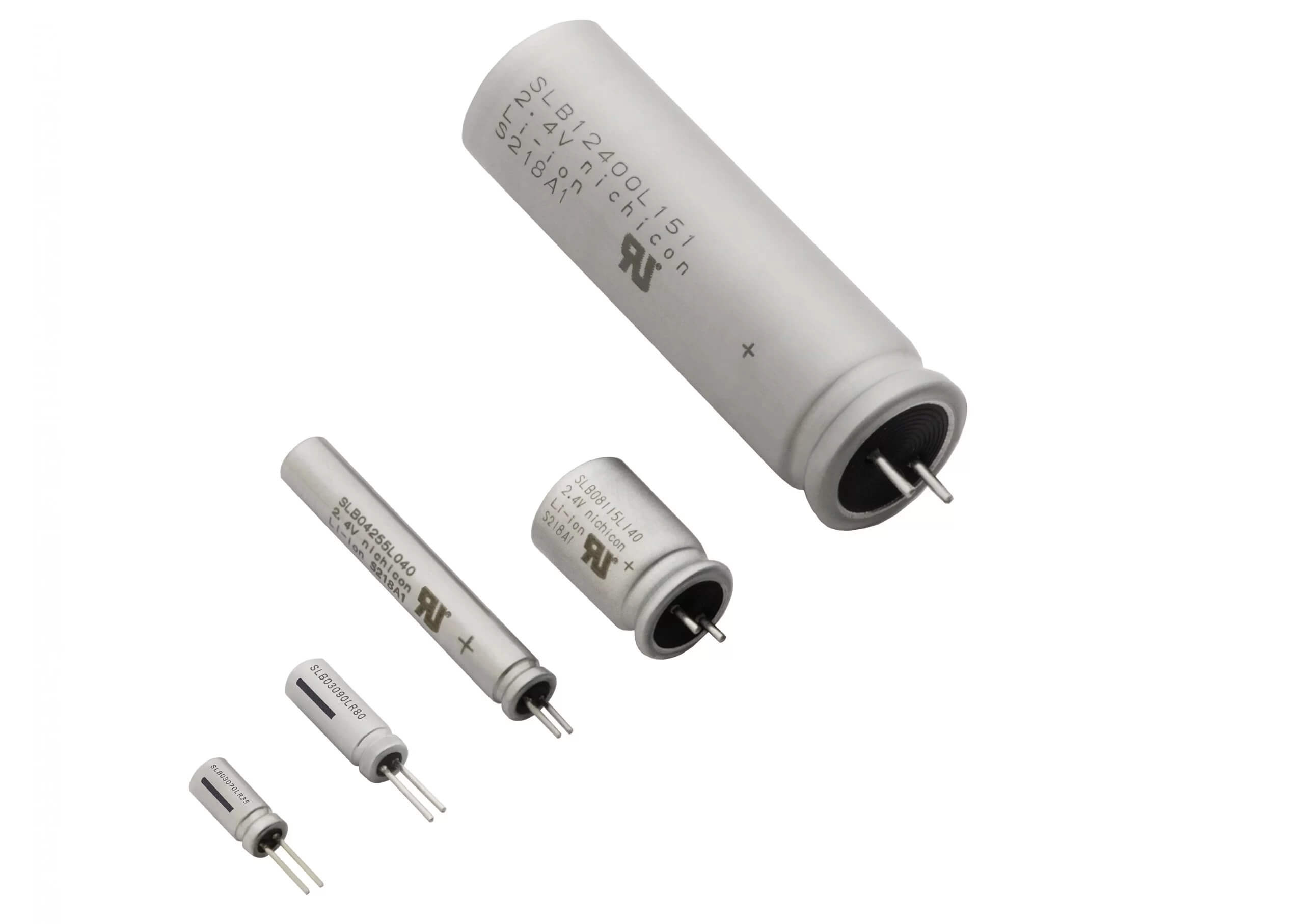.jpg)
LTO batteries can be used in the same applications as hybrid supercapacitors as they share many of the same characteristics. Nichicon’s LTO batteries merge the top qualities of Li-Ion batteries and supercapacitors. They offer fast charge and discharge capabilities, while providing twice the energy density. LTO batteries have a steady stable output voltage compared to hybrid supercapacitors.
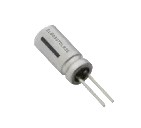 SLB03070LR35* 0.35mAh φ3×7L |
 SLB03090LR80* 0.8mAh φ3.3×9L |
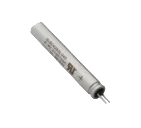 SLB04255L040* 4mAh φ4×25.5L |
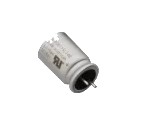 SLB08115L140* 14mAh φ8×11.5L |
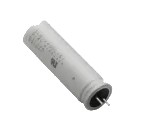 SLB12400L151* 150mAh φ12.5×40L |